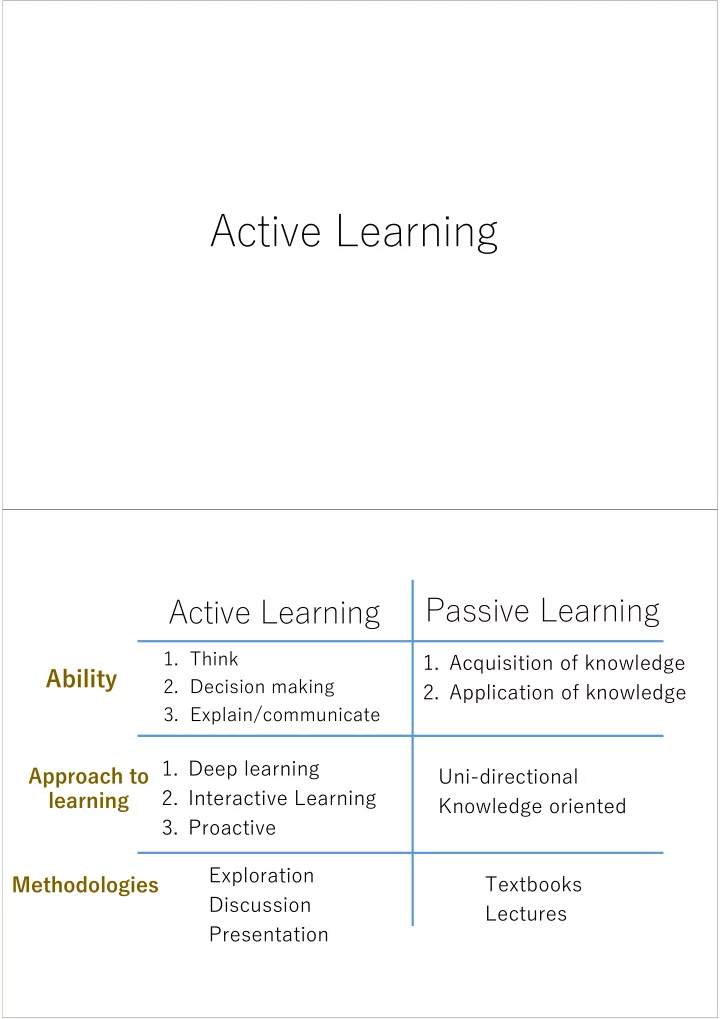

Active Learning Passive Learning Active Learning 1. Think 1. Acquisition of knowledge Ability 2. Decision making 2. Application of knowledge 3. Explain/communicate 1. Deep learning Approach to Uni-directional 2. Interactive Learning learning Knowledge oriented 3. Proactive Exploration Methodologies Textbooks Discussion Lectures Presentation
Passive Learning Active Learning 1. Think 1. Acquisition of knowledge Ability 2. Decision making 2. Application of knowledge 3. Explain/communicate Providing 1. Deep learning Approach to Uni-directional Providing answers opportunities for 2. Interactive Learning learning (Basis of answers) Knowledge oriented finding answers 3. Proactive (=mission/project) Exploration Textbooks Methodologies Discussion Lectures Presentation Passive Learning Active Learning 1. Think 1. Acquisition of knowledge Ability 2. Decision making 2. Application of knowledge 3. Explain/communicate Deeper understanding on Issues 1. Deep learning Approach to Uni-directional 2. Interactive Learning learning Knowledge oriented 3. Proactive Exploration Methodologies Textbooks Discussion Lectures Presentation
Why Active Learning? Information and Communication Technology To know Age of Knowledge-based Society To structurise/ interpret information Age of boarder-less Society To communicate/explain Emergence of various issues To cooperate Globalization across governance layers - Political To make decision - Social - Economic To create - Environmental
Nature Exploration Aim To find out creatures living around us and to understand the relationship between the creature and the natural environment Activities 1. Explore nature around us and find what kind of creatures are inhibiting. 2. Discuss where were creatures and why they were there. 3. What could be the problem? Share your thoughts. KP Method Aim To acquire skill to communicate/explain in simple way Activities 1. Provide information on pieces of paper 2. Let students discuss questions in groups based on the information (20-30min) 3. Let the group compile, write and explain their conclusions in a logical mannar Example 1. The main staple of Japan is rice. Consumption per person is approx. 54kg/person 2. The consumption of rice halved in the past 50 years 3. More than half of the agricultural field in Japan grows vegitables (but not rice). 54.4% in 2014 Question How will Japanʼs agricultural communities would look like in 2050?
Educational Tools Practice Lecture Ecology Note Teacherʼs Guide Basics Lesson 1 Lesson 2 Waste Audit Understanding “Our” Waste Tool 1 Lesson 3 (Waste Audit) Lesson 4 3R Lesson 5 Tool 2 Segregation Segregation (Segregation) Lesson 6 Lesson 7 Composting Composting Lesson 8 Tool 3 (Composting) Lesson 9 Climate Deeper understanding on waste & resource issues
Recommend
More recommend